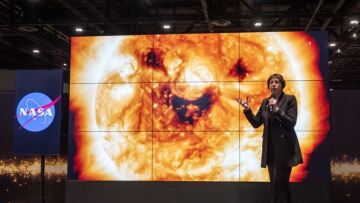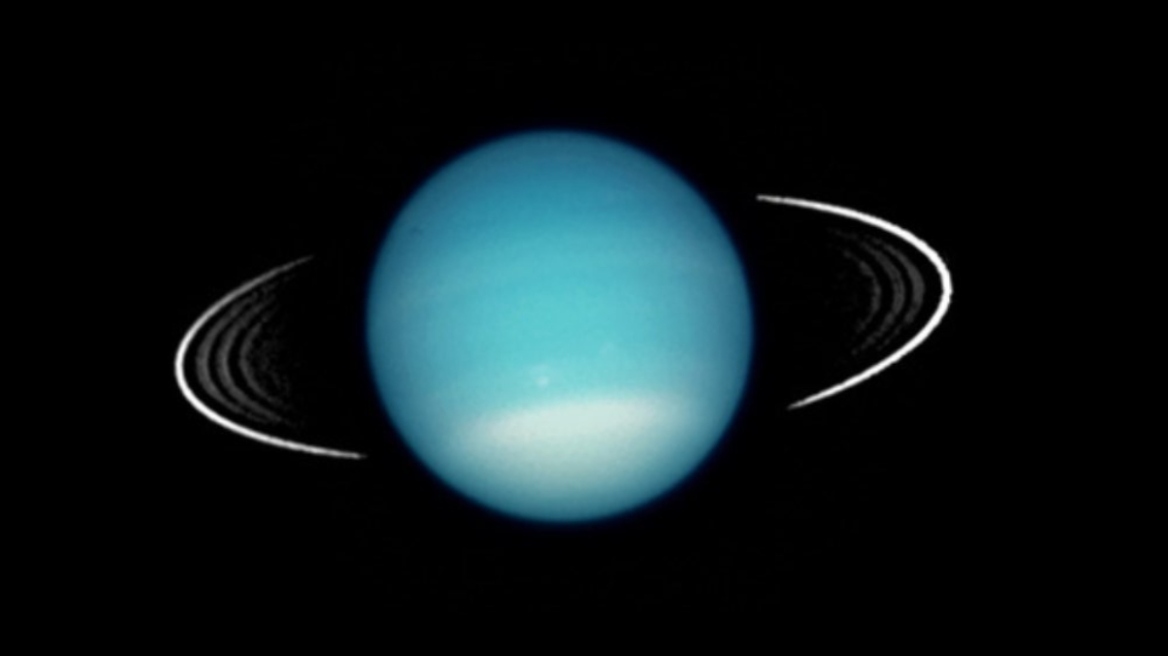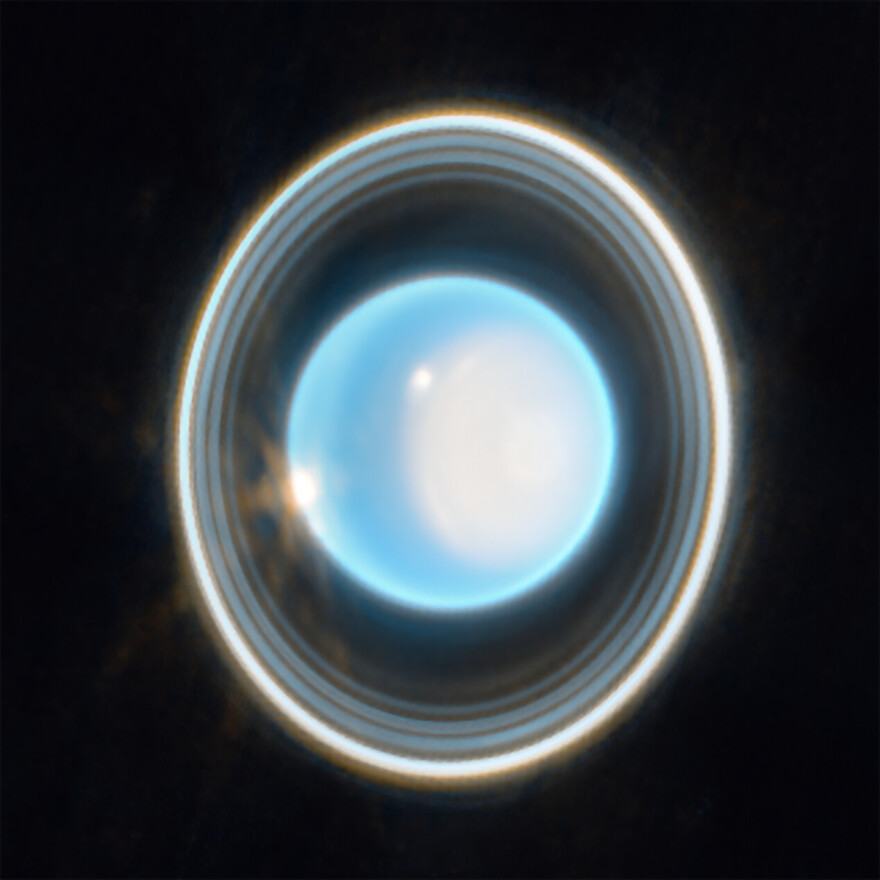


3. Keck Observatory & @ChandraXRay: @KeckObservatory took the infrared composite image on the left in 2004 with adaptive optics. On the right is the same image with the addition of Chandra’s X-ray data, shown in magenta. pic.twitter.com/1bsAO8QIpy
— NASA Webb Telescope (@NASAWebb) April 6, 2023
Uranus has 27 known moons. Most are too small and faint to see, but the 6 brightest are labeled in this wide-view. (The other bright objects are background galaxies.) This was only a 12-minute exposure image! It's just the tip of the ice(planet)berg for what Webb will uncover. pic.twitter.com/p7vpPdNiqo
— NASA Webb Telescope (@NASAWebb) April 6, 2023
Check out the polar cap (bright white area) on the right side! Webb reveals, for the first time, a subtle enhanced brightening at its center. This polar cap appears in the direct sunlight of summer and vanishes in the fall. Webb's data will help us to understand this mystery. pic.twitter.com/OJuBUpcsiD
— NASA Webb Telescope (@NASAWebb) April 6, 2023
2. Hubble: @NASAHubble has given us multiple views of Uranus. The image on the left was taken with visible, ultraviolet and infrared light in 2003, while the image on the right was taken in visible light in 2022. pic.twitter.com/wAI4H4wmQH
— NASA Webb Telescope (@NASAWebb) April 6, 2023
